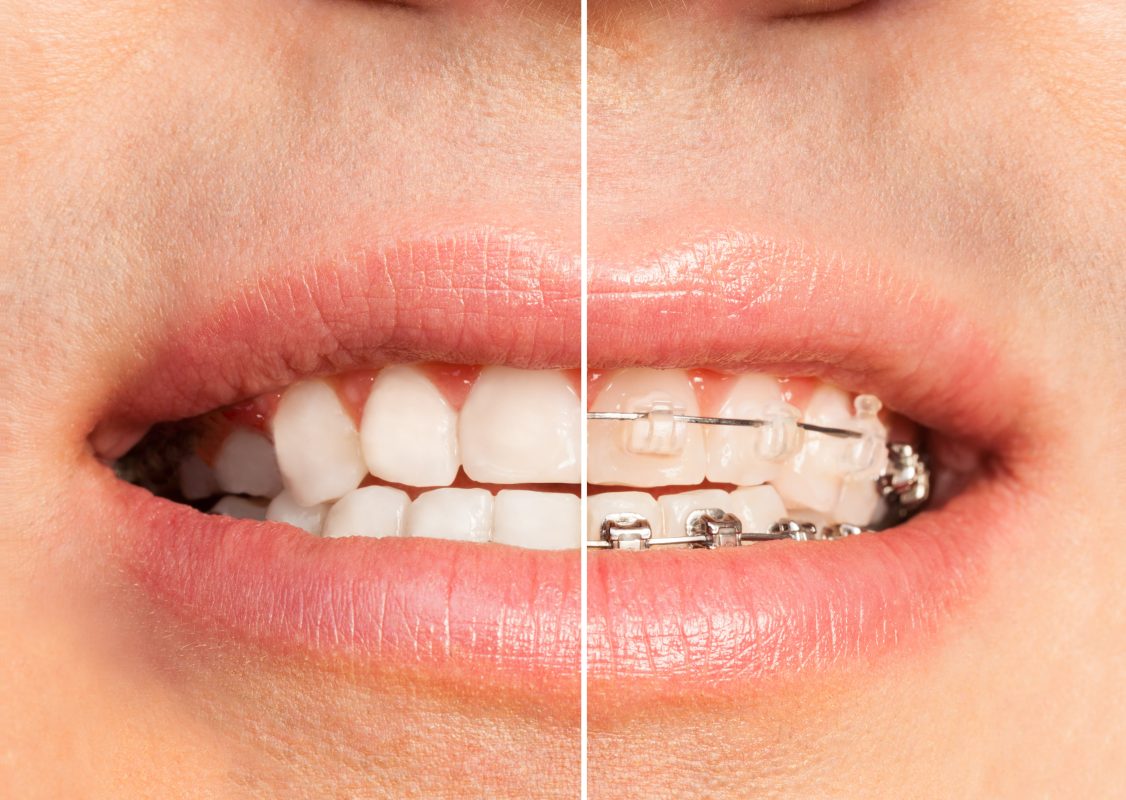Looking for a discreet and effective way to straighten your teeth? As a seasoned dentist, I’ve seen many patients grappling with this question. While metal braces remain an option, many people prefer ceramic braces or clear aligners due to their subtlety. But which option is the right one for you? Let’s compare ceramic braces and clear aligners to help you make an informed decision.
Ceramic Braces: Advantages & Disadvantages
Ceramic braces are similar to traditional metal braces, but instead of metal brackets, they use clear or tooth-coloured brackets that blend in with your teeth. The wires connecting the brackets are also less noticeable, and some brands even offer wires that match the colour of your teeth. This makes ceramic braces a great option for people who want a more subtle look.
One advantage of ceramic braces is their durability (we tend to use 3M clarity brackets). They are made from strong materials and can withstand the wear and tear of daily life. They are also an effective way to correct a wide range of dental issues, including crowding, spacing, and bite problems. However, ceramic braces do have some downsides. They can be more expensive (see our article on teeth straightening costs) than traditional metal braces, and they require more frequent adjustments. Additionally, the clear brackets can stain easily if you don’t take good care of them. You’ll need to brush and floss regularly and avoid foods and drinks that can stain your teeth, such as coffee, tea, and red wine (see our article on teeth straightening problems).
Clear Aligners: Advantages & Disadvantages
Clear aligners are a newer option that have gained popularity in recent years. They are made from a clear plastic material that fits over your teeth and gradually shifts them into the desired position. You wear each set of aligners for a few weeks and then switch to the next set in the series. We tend to use Spark and Invisalign.
One advantage of clear aligners is their removability. You can take them out to eat and brush your teeth, which makes oral hygiene easier. They are also virtually invisible, so you can straighten your teeth without anyone knowing. Clear aligners are a great option for people with mild to moderate dental issues. They can correct crooked teeth, spacing issues, and minor bite problems. However, they may not be as effective for more complex issues, such as severe crowding or bite problems.
Which Option is Right for You?
Both ceramic braces and clear aligners have their advantages and disadvantages. The right option for you depends on your individual needs and preferences.
If you want a discreet look and have a wide range of dental issues, ceramic braces may be the best option for you. They are durable, effective, and blend in with your teeth.
If you prefer a more flexible and removable option and have mild to moderate dental issues, clear aligners may be the way to go. They are virtually invisible, and you can take them out for eating and oral hygiene.
Ultimately, the best way to determine which option is right for you is to schedule a consultation with your dentist. They can evaluate your dental issues and help you choose the best treatment plan. I remember one of my patients, a teenager named Sarah, who was self-conscious about her crooked teeth and didn’t want to get traditional metal braces. After discussing her options, we decided that ceramic braces would be the best option for her. She was thrilled with the results and loved the fact that the braces were nearly invisible. Sarah’s confidence soared after her treatment, and she was finally able to smile with pride.
Here’s a simple diagram to help you visualize the differences between ceramic braces and clear aligners:

In conclusion, both ceramic braces and clear aligners are great options for straightening your teeth. It’s important to consider the advantages and disadvantages of each option, and to consult with your dentist to determine the best treatment plan for you. By taking the time to make an informed decision, you can achieve a beautiful, healthy smile that you’ll be proud to show off for years to come.
Get In Touch
Frequently asked questions about ceramic braces and clear aligners:
- Are ceramic braces more expensive than metal braces? Yes, ceramic braces are typically more expensive than traditional metal braces. They are made from high-quality materials and are designed to be more subtle, which can increase the cost.
- Can you eat and drink with clear aligners? You should take out your clear aligners when you eat or drink anything besides water. Eating or drinking with aligners in can cause them to stain or become damaged.
- How long does the treatment take with ceramic braces? The length of treatment with ceramic braces depends on the individual patient and their specific dental issues. Generally, treatment with ceramic braces takes about the same amount of time as treatment with traditional metal braces.
- How often do I need to wear clear aligners? To get the best results, you should wear clear aligners for at least 22 hours a day. This means that you should only take them out for eating and brushing your teeth.
- Can I play sports with ceramic braces? Yes, you can play sports with ceramic braces, but you should wear a mouthguard to protect your teeth and braces from damage.
- Do clear aligners hurt? Clear aligners may cause some discomfort or pressure when you first start wearing them, but this should subside within a few days. If you experience severe pain or discomfort, contact your dentist.


